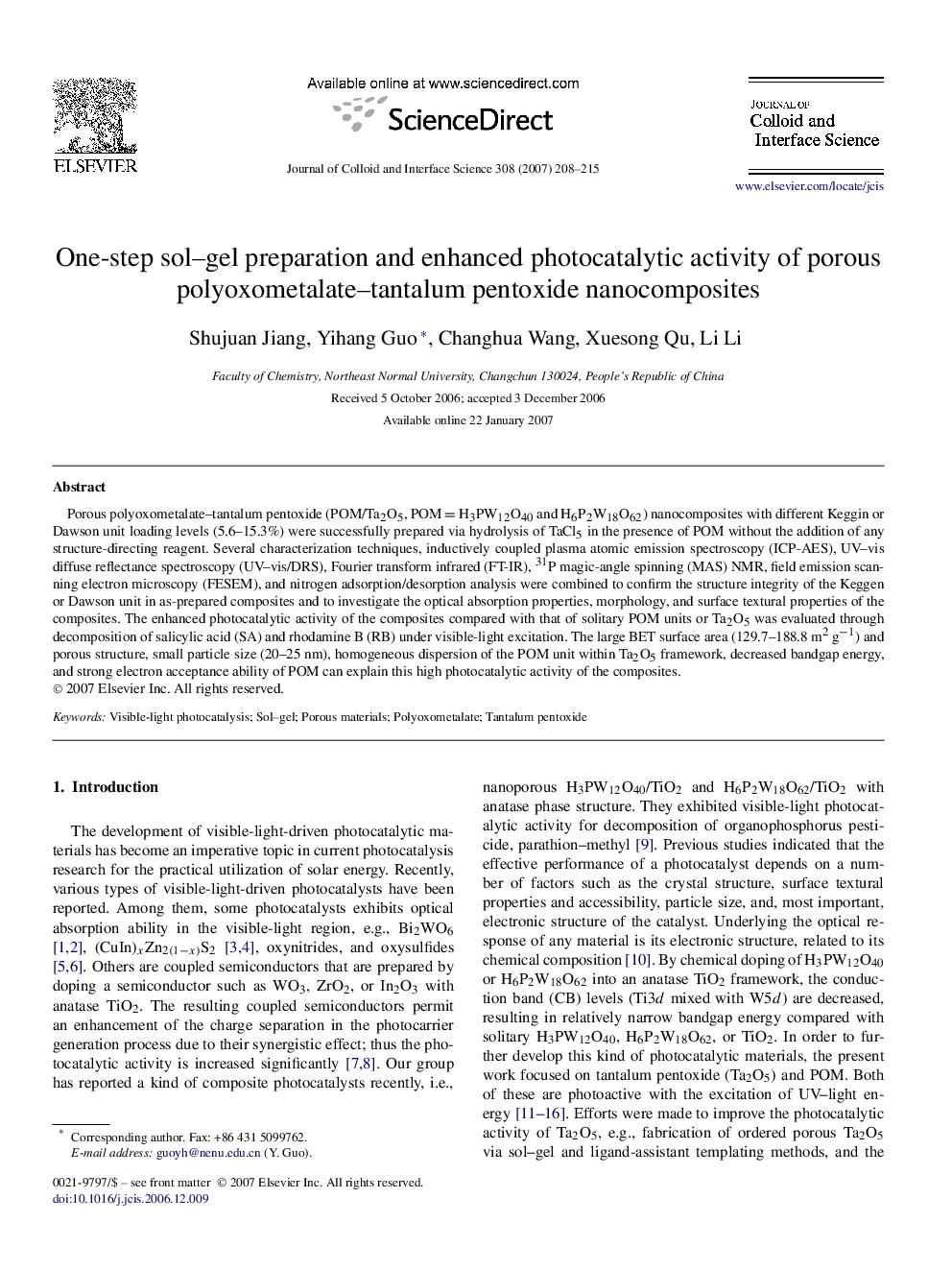| Article ID | Journal | Published Year | Pages | File Type |
|---|---|---|---|---|
| 613096 | Journal of Colloid and Interface Science | 2007 | 8 Pages |
Porous polyoxometalate–tantalum pentoxide (POM/Ta2O5, POM = H3PW12O40 and H6P2W18O62) nanocomposites with different Keggin or Dawson unit loading levels (5.6–15.3%) were successfully prepared via hydrolysis of TaCl5 in the presence of POM without the addition of any structure-directing reagent. Several characterization techniques, inductively coupled plasma atomic emission spectroscopy (ICP-AES), UV–vis diffuse reflectance spectroscopy (UV–vis/DRS), Fourier transform infrared (FT-IR), 31P magic-angle spinning (MAS) NMR, field emission scanning electron microscopy (FESEM), and nitrogen adsorption/desorption analysis were combined to confirm the structure integrity of the Keggen or Dawson unit in as-prepared composites and to investigate the optical absorption properties, morphology, and surface textural properties of the composites. The enhanced photocatalytic activity of the composites compared with that of solitary POM units or Ta2O5 was evaluated through decomposition of salicylic acid (SA) and rhodamine B (RB) under visible-light excitation. The large BET surface area (129.7–188.8 m2 g−1) and porous structure, small particle size (20–25 nm), homogeneous dispersion of the POM unit within Ta2O5 framework, decreased bandgap energy, and strong electron acceptance ability of POM can explain this high photocatalytic activity of the composites.
Graphical abstractPorous polyoxometalate–tantalum pentoxide nanocomposites (H3PW12O40/Ta2O5 and H6P2W18O62/Ta2O5) were prepared for the first time, and they exhibited visible-light photocatalytic activity for decomposition of aqueous salicylic acid and rhodamine B.Figure optionsDownload full-size imageDownload as PowerPoint slide
